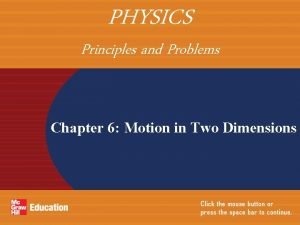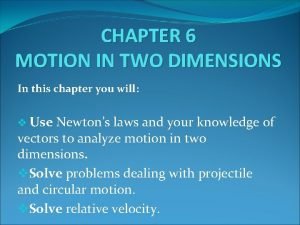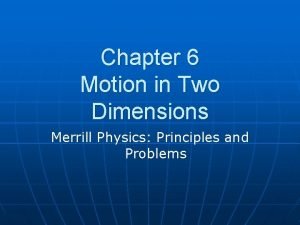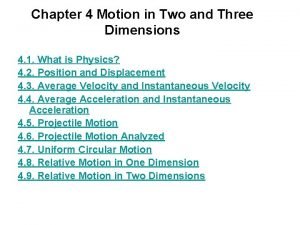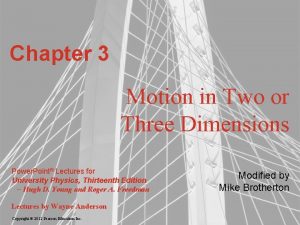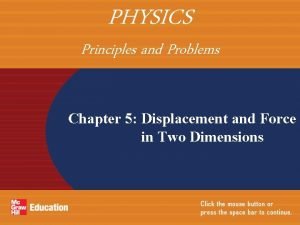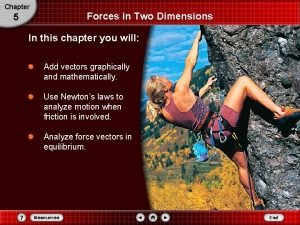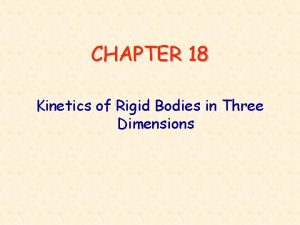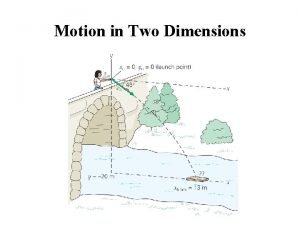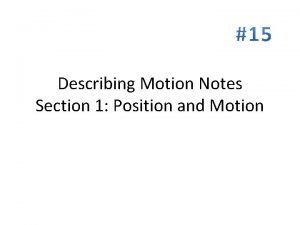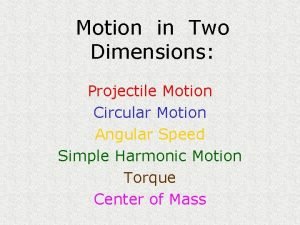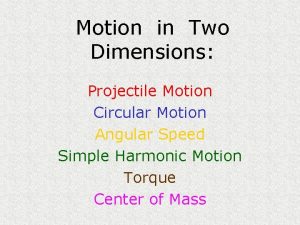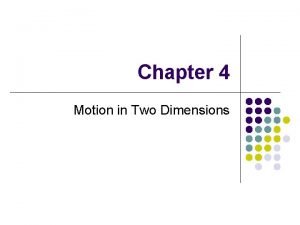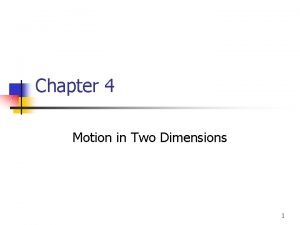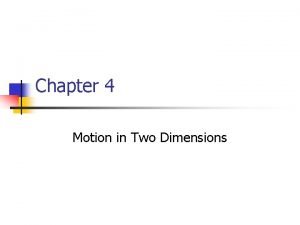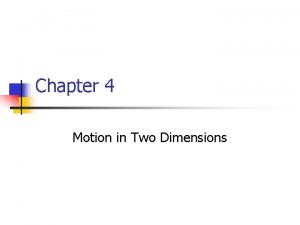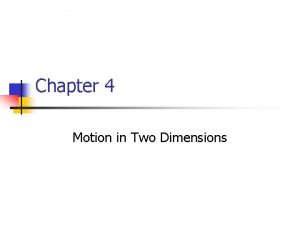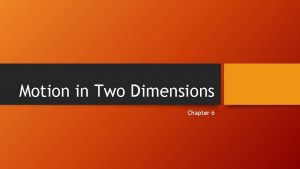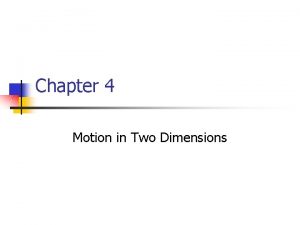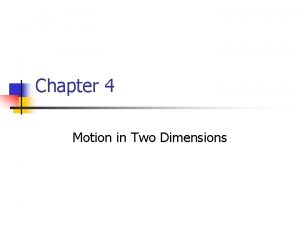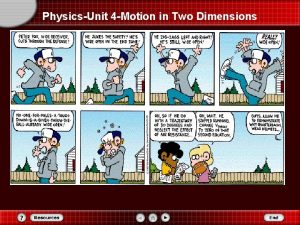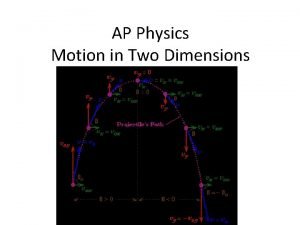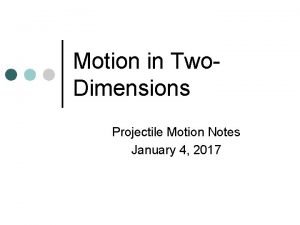Motion in Two Dimensions Chapter 6 Motion in

















- Slides: 17

Motion in Two Dimensions Chapter 6

Motion in Two Dimensions In this chapter we’ll use what we learned about resolving vectors into their x- and ycomponents to study three types of two-dimensional motion. Projectile motion A form of motion in which an object or particle (called a projectile) is thrown or launched near the Earth's surface, and it moves along a curved path under the action of gravity only. Uniform circular motion The movement of an object at a constant speed around a circle with a fixed radius. Relative motion A situation in which an object is moving in a coordinate system that itself is moving,

Components of Vectors

Projectile Motion We can resolve the motion of a projectile (say a cannonball, a shot put, a satellite, etc. ) into its horizontal and vertical components. If we can neglect friction and air resistance, the horizontal component is just motion with constant velocity, since no horizontal force is acting on the object. Similarly, the vertical component is just that of an object in free fall, i. e. , a constant acceleration due to the gravitational force (which is vertical).

Example of Projectile Motion: Shot Put Video

Components of Projectile Motion

Projectile Motion Parameters

Example Problem - 1 v 52. The toy car in the figure runs off the edge of a table that is 1. 225 m high. The car lands 0. 400 from the base of the table. 1. 225 m a. How long did it take the car to fall? b. How fast was the car going on the table? 0. 400 m

Example Problem - 2 53. A dart player throws a dart horizontally at 12. 4 m/s. The dart hits the board 0. 32 m below the height from which it was thrown. How far away is the player from the dart board?

Projectile Motion Videos Projectile Motion in Football Projectile Motion in Hockey Projectile Motion in Juggling Mythbusters

Projectile Motion Simulation Projectile Motion Simulator Complete handout worksheet

Uniform Circular Motion The movement of an object at a constant speed around a circle with a fixed radius is called uniform circular motion. v 1 v 2 r 1 r 2 Velocity is always tangent to the circle. Acceleration is constant and directed toward the center of the circle. v 1 r 2 v 2

Centripetal Acceleration - 1

Centripetal Acceleration - 2

Example Problem 66. A carnival clown rides a motorcycle down a ramp and around a vertical loop. If the loop has a radius of 18 m, what is the slowest speed the rider can have at the top of the loop to avoid falling? Hint: At this slowest speed the track exerts no force on the motorcycle at the top of the loop.

Relative Velocity

Example Problem An airplane flies due north at 150 km/hr relative to the air. There is a wind blowing at 75 km/hr to the east relative to the ground. What is the plane’s speed relative to the ground?
 Physics: principles and problems chapter 6 answers
Physics: principles and problems chapter 6 answers A 45-kg merry-go-round worker
A 45-kg merry-go-round worker Chapter 6 motion in two dimensions
Chapter 6 motion in two dimensions Chapter 6 motion in two dimensions answer key
Chapter 6 motion in two dimensions answer key Motion in two and three dimensions
Motion in two and three dimensions Motion in two and three dimensions
Motion in two and three dimensions The diagram shows three points of a motion diagram
The diagram shows three points of a motion diagram Motion diagram
Motion diagram Displacement and force in two dimensions
Displacement and force in two dimensions Chapter 5 forces in two dimensions test
Chapter 5 forces in two dimensions test Kinetics of rigid body
Kinetics of rigid body Chapter 2 motion section 1 describing motion answer key
Chapter 2 motion section 1 describing motion answer key The main difference between speed and velocity involves
The main difference between speed and velocity involves Chapter 2 section 1 describing motion answer key
Chapter 2 section 1 describing motion answer key Vy=gt
Vy=gt Two dimensions of political ideologies
Two dimensions of political ideologies Projectile motion displacement formula
Projectile motion displacement formula Position and motion
Position and motion
